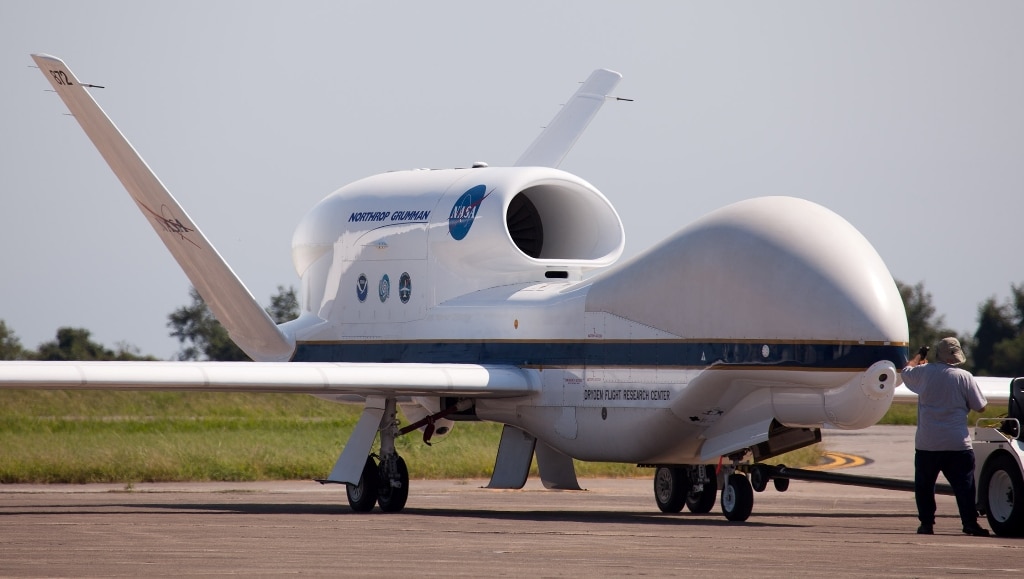Aerospace
Northrop Grumman Partners with NASA to Shape Future Integration of Uncrewed Autonomous Systems

Northrop Grumman Corporation is collaborating with NASA to develop and test solutions for integrating large, Uncrewed aircraft systems into the National Airspace System (NAS). The effort will focus on air cargo operations and is part of NASA’s Air Traffic Management-exploration (ATM-X) Path finding for Airspace with Autonomous Vehicles (PAAV) subproject.
Northrop Grumman to Unveil the B-21 Raider(Opens in a new browser tab)
Under this partnership, Northrop Grumman and NASA will develop and test solutions for integrating large Unmanned Aircraft Systems into the national airspace system, with an emphasis on air cargo operations. To support this long-term goal, they will exchange data and information to define technologies and procedures for remotely piloted systems. This work will include coordination with the FAA, flight readiness reviews and development of a test plan for simulations and flight demonstrations.
Northrop Grumman and the US Air Force Introduce the B-21 Raider(Opens in a new browser tab)
Northrop Grumman is a long-standing leader in the development and operations of advanced autonomous systems and future autonomous air capabilities. From rudimentary radio-controlled aircraft to today’s software intensive systems, the company’s aircraft, such as the Global Hawk, are already operating in collaborative environments with crewed aircraft. With technical expertise in military aviation and autonomy, Northrop Grumman developed the first distributed autonomous framework that allows military commanders to control numerous Uncrewed aircraft simultaneously.

Aerospace
Boeing Transfers Rocket Stage to NASA, Paving Way for Human Moon Mission

Boeing has achieved a significant milestone by providing NASA with the second core stage of the Space Launch System (SLS) rocket.
This crucial component, crafted at NASA’s Michoud Assembly Facility (MAF), is set to propel the Artemis II crew into lunar orbit, marking humanity’s return to deep space after a 50-year hiatus.
The monumental Boeing-built rocket stage, the largest element of the Artemis II mission, will embark on a journey aboard the Pegasus barge, traveling 900 miles to NASA’s Kennedy Space Center.
Comparison of two legendary aircraft B777x vs B747 aircraft:Click here
Upon arrival, it will be meticulously integrated with other essential Artemis II components, including the upper stage, solid rocket boosters, and NASA’s Orion spacecraft within the iconic Vehicle Assembly Building. This intricate integration process is a vital step toward the eagerly anticipated Artemis II launch, slated for 2025.
“Boeing-built products helped land humankind on the moon in 1969, and we’re proud to continue that legacy through the Artemis generation,” remarked Dave Dutcher, vice president and program manager for Boeing’s SLS program. “Together, with NASA and our industry partners and suppliers, we are building the world’s most capable rocket and paving the way to deep space through America’s rocket factory in New Orleans.”
NASA, Lockheed Martin Reveal X-59 Quiet Supersonic Aircraft:Click here
The delivery of Core Stage 2 marks a significant achievement in the evolution of the SLS rocket. Towering over 200 feet and powered by four RS-25 engines, this core stage, coupled with two solid-fueled booster rockets, will generate a staggering 8.8 million pounds of thrust. This immense power is crucial to launching Artemis II and future missions into the vast expanse of space.
The SLS rocket stands unparalleled in its capability to transport both crew and substantial cargo to the moon and beyond in a single launch. Its extraordinary capacity will facilitate the delivery of human-rated spacecraft, habitats, and scientific missions to destinations including the moon and Mars, ushering in a new era of space exploration.
-

 Travel1 week ago
Travel1 week agoAir India to Expand US Operations with Three New Routes After a Decade
-

 Travel2 weeks ago
Travel2 weeks agoWhy We Should Avoid These Stamps in a Passport
-

 Airlines1 month ago
Airlines1 month agoInvestigations Reveal Fake Chinese Titanium in Boeing and Airbus Jets
-

 Tech4 weeks ago
Tech4 weeks agoChina’s CATL Plans 1,800-Mile Electric Plane Launch by 2027
-

 Airport3 days ago
Airport3 days agoTop 10 Largest Airports in the World by Size
-

 Aerospace4 weeks ago
Aerospace4 weeks agoChina’s Fighter Jets Turn Wings into Autonomous Drones
-

 Airlines4 days ago
Airlines4 days agoAir India Rolls Out A350s for Delhi-New York JFK and Newark Routes
-

 Defence3 weeks ago
Defence3 weeks agoBoeing Enhances Chinook with New Engines and Block II Upgrades at $96 Million







